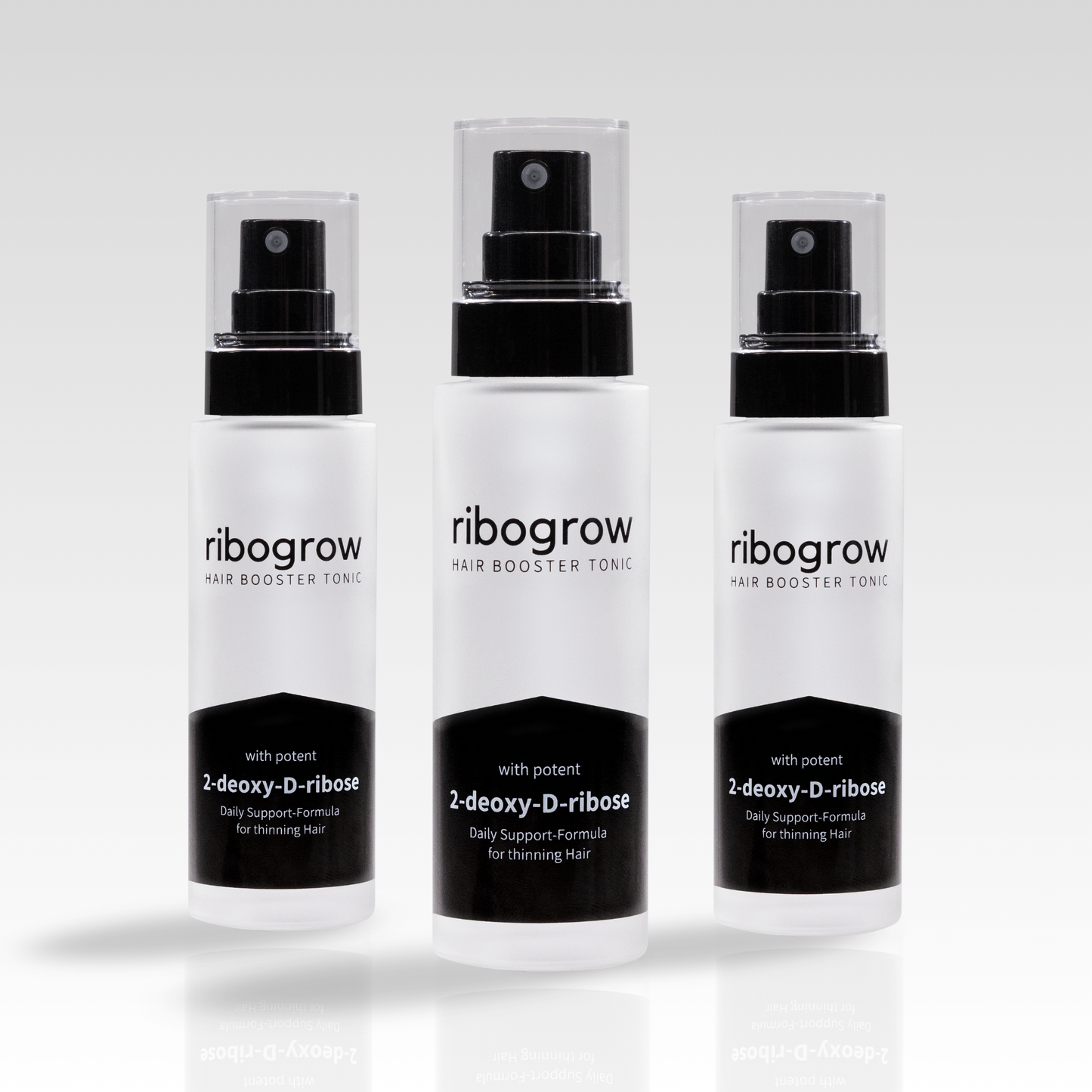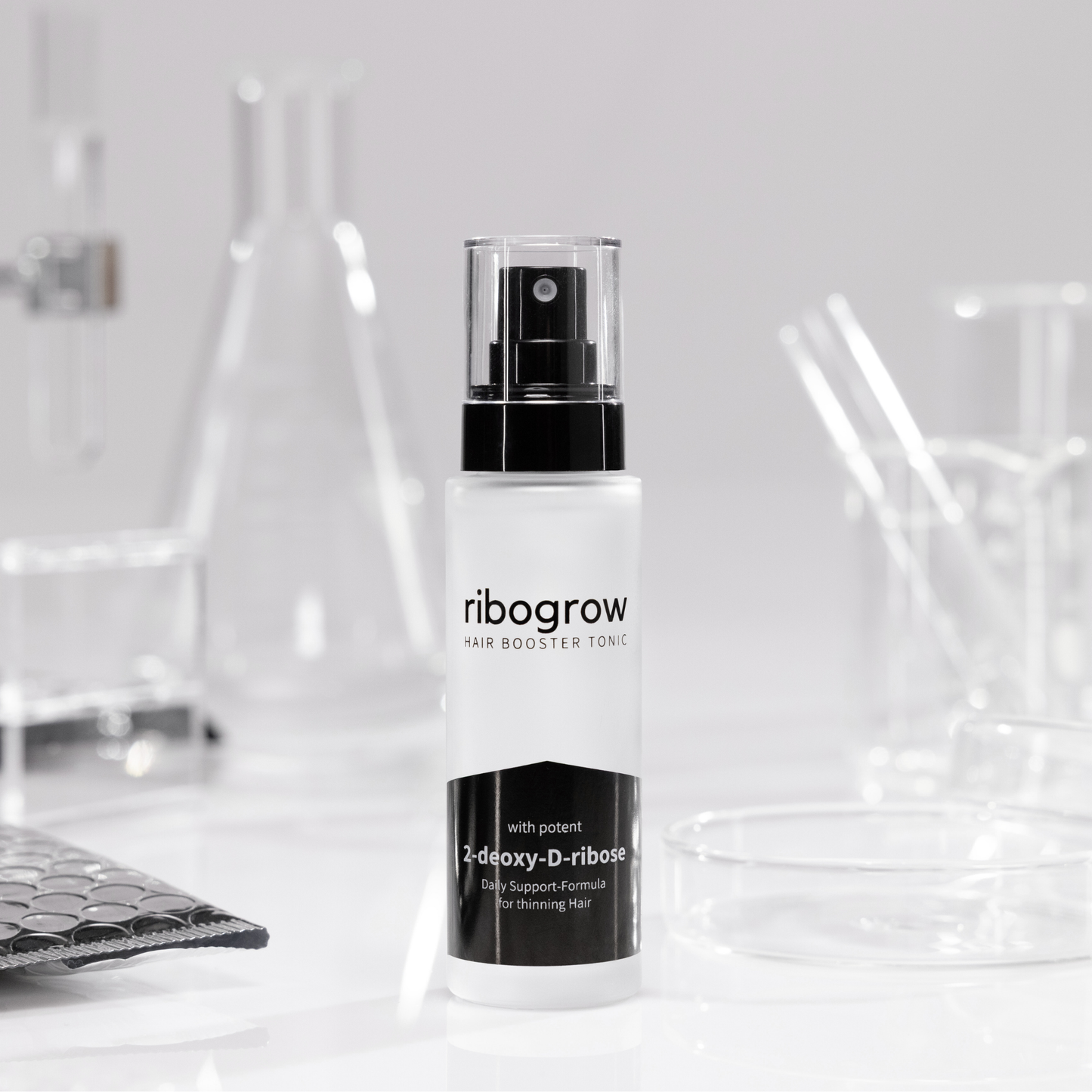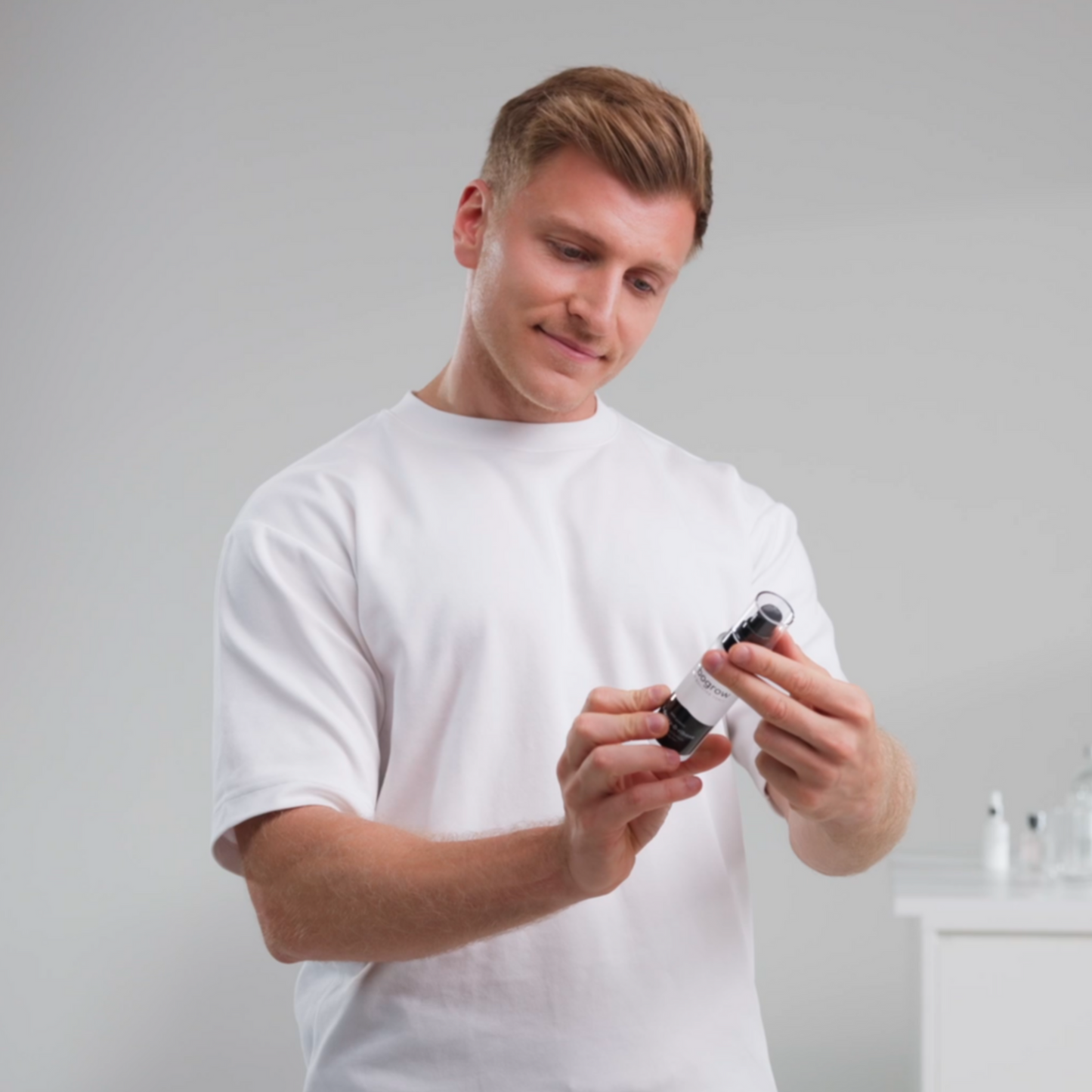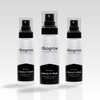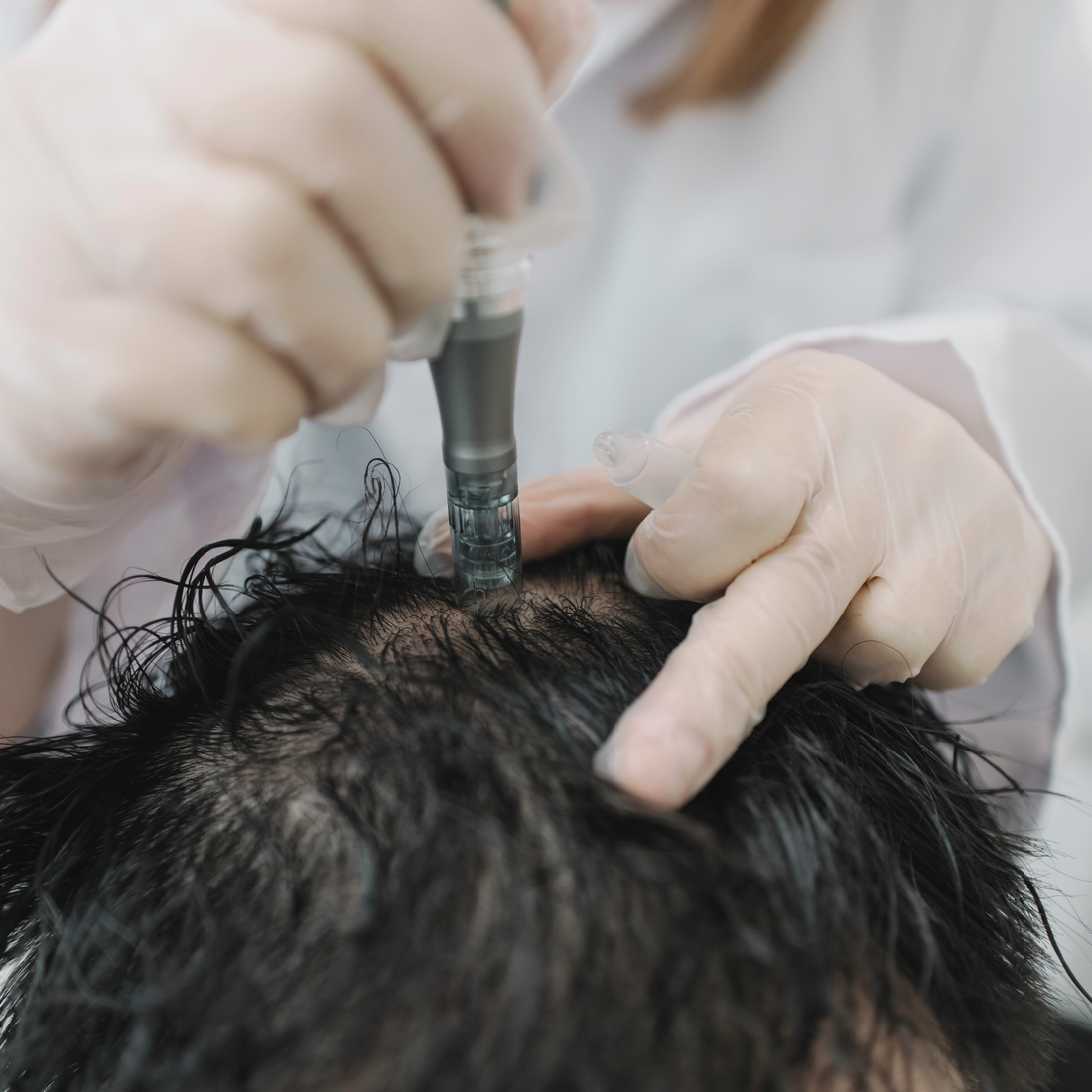
Microneedling for Hair Loss: A Comprehensive Guide to Its Efficacy and Mechanisms
Share
Introduction
Hair loss is a widespread concern affecting both men and women, with androgenetic alopecia (AGA) being the most common cause. Conventional treatments such as topical minoxidil and oral finasteride have demonstrated efficacy, but newer therapies like microneedling are gaining recognition as potential alternatives or adjuncts. This article explores the scientific principles, mechanisms of action, clinical evidence, and safety considerations of microneedling for hair loss treatment, providing a comprehensive overview for individuals considering this approach.
Understanding Microneedling:
Microneedling, also referred to as collagen induction therapy, dermarolling, or skin needling, involves using fine needles to create controlled micro-injuries on the skin's surface. Initially developed for dermatological applications like skin rejuvenation and scar treatment, it has been adapted for hair loss therapy due to its ability to stimulate hair follicle activity and enhance the absorption of topical treatments.
Mechanisms of Action in Hair Regrowth
Microneedling promotes hair regrowth through several key biological mechanisms:
1. Activation of Hair Follicle Stem Cells
The micro-injuries induced by microneedling trigger a wound-healing response, which can activate dormant hair follicle stem cells, pushing them into the anagen (growth) phase.
2. Upregulation of Growth Factors
Research indicates that microneedling increases the production of growth factors such as:
- Platelet-Derived Growth Factor (PDGF): Stimulates hair follicle development.
- Epidermal Growth Factor (EGF): Supports cellular proliferation and hair cycle progression.
- Vascular Endothelial Growth Factor (VEGF): Enhances blood circulation, supplying hair follicles with essential nutrients and oxygen.
3. Enhanced Absorption of Topical Treatments
Microneedling creates microchannels in the scalp, facilitating deeper penetration of topical agents like minoxidil, thereby improving their efficacy.
Clinical Evidence: Does Microneedling Work for Hair Loss?
Microneedling as a Standalone Therapy
A randomized controlled trial comparing microneedling with 5% minoxidil monotherapy found that microneedling alone significantly increased total hair count (p < 0.001). This suggests that microneedling can be effective as an independent treatment.
Combination Therapy: Enhancing Results
- Microneedling and Minoxidil: Several studies suggest that combining microneedling with topical 5% minoxidil leads to superior hair regrowth compared to either treatment alone (p < 0.05).
- Microneedling and Platelet-Rich Plasma (PRP): Microneedling combined with PRP has shown promising results in patients with alopecia areata, with significant hair regrowth observed and no severe adverse effects reported.
- Microneedling and 2-Deoxy-D-Ribose (2dDR): 2-deoxy-D-ribose (2dDR) is a naturally occurring sugar that has shown potential in promoting hair regrowth. A pre-clinical study found that topical application of 2dDR gel stimulated hair regrowth similarly to minoxidil, possibly due to its role in VEGF stimulation and wound healing. However, further research is needed to confirm its effectiveness.
Safety and Side Effects
Microneedling is generally well-tolerated, with mild and transient side effects, including:
- Redness (erythema)
- Mild scalp discomfort
- Minor bleeding
Strict hygiene protocols should be followed to minimize the risk of infection. Single-use needle devices are recommended, and thorough disinfection of the scalp and equipment is essential before and after each session.
Optimal Treatment Protocols: How to Maximize Results
1. Needle Length
0.5 mm to 1.5 mm: The optimal needle length varies based on individual tolerance and treatment goals.
Study comparison: A 0.6 mm penetration depth was found to be more beneficial than a 1.2 mm depth in a clinical trial.
2. Treatment Frequency
Sessions typically range from weekly to monthly.
Some studies indicate that lower session frequency may result in increased hair count.
3. Device Selection
Derma-rollers vs. Stamps: Stamping devices with vertically positioned needles may be preferable as they create smaller, more controlled wounds, reducing unnecessary scalp trauma.
Is Microneedling the Future of Hair Loss Treatment?
Microneedling has emerged as a promising therapy for androgenetic alopecia and other hair loss disorders, particularly when used in combination with other treatments. While its mechanisms—including stem cell activation and enhanced topical absorption—offer a multifaceted approach to hair regrowth, more large-scale, long-term studies are necessary to establish standardized protocols and confirm sustained efficacy.
For those considering microneedling as part of their hair restoration journey, consultation with a dermatologist is recommended to determine the most suitable treatment approach based on individual needs.
Visual Summary
References:
Gupta AK, Quinlan EM, Venkataraman M, Bamimore MA. Microneedling for Hair Loss. J Cosmet Dermatol. 2022 Jan;21(1):108-117. doi: 10.1111/jocd.14525. Epub 2021 Oct 29. PMID: 34714971.
Zhou Y, Chen C, Qu Q, Zhang C, Wang J, Fan Z, Miao Y, Hu Z. The effectiveness of combination therapies for androgenetic alopecia: A systematic review and meta-analysis. Dermatol Ther. 2020 Jul;33(4):e13741. doi: 10.1111/dth.13741. Epub 2020 Jul 2. PMID: 32478968.
Dhurat R, Sukesh M, Avhad G, Dandale A, Pal A, Pund P. A randomized evaluator blinded study of effect of microneedling in androgenetic alopecia: a pilot study. Int J Trichology. 2013 Jan;5(1):6-11. doi: 10.4103/0974-7753.114700. PMID: 23960389; PMCID: PMC3746236.
Faghihi G, Nabavinejad S, Mokhtari F, Fatemi Naeini F, Iraji F. Microneedling in androgenetic alopecia; comparing two different depths of microneedles. J Cosmet Dermatol. 2021 Apr;20(4):1241-1247. doi: 10.1111/jocd.13714. Epub 2020 Sep 29. PMID: 32897622.
Tawfik AA, Osman MAR. The effect of autologous activated platelet-rich plasma injection on female pattern hair loss: A randomized placebo-controlled study. J Cosmet Dermatol. 2018 Feb;17(1):47-53. doi: 10.1111/jocd.12357. Epub 2017 May 14. PMID: 28503741.
Cervelli V, Garcovich S, Bielli A, Cervelli G, Curcio BC, Scioli MG, Orlandi A, Gentile P. The effect of autologous activated platelet rich plasma (AA-PRP) injection on pattern hair loss: clinical and histomorphometric evaluation. Biomed Res Int. 2014;2014:760709. doi: 10.1155/2014/760709. Epub 2014 May 6. PMID: 24883322; PMCID: PMC4032742.
Liebl H, Kloth LC. Skin cell proliferation stimulated by microneedles. J Am Coll Clin Wound Spec. 2012 Dec 25;4(1):2-6. doi: 10.1016/j.jccw.2012.11.001. PMID: 24527373; PMCID: PMC3921236.
Fabbrocini G, De Vita V, Pastore F, Annunziata MC, Cacciapuoti S, Monfrecola A, Cameli N, Tosti A. Collagen induction therapy for the treatment of upper lip wrinkles. J Dermatolog Treat. 2012 Apr;23(2):144-52. doi: 10.3109/09546634.2010.544709. Epub 2011 Aug 2. PMID: 21810012.
Menon I, Bagwe P, Gomes KB, Bajaj L, Gala R, Uddin MN, D'Souza MJ, Zughaier SM. Microneedles: A New Generation Vaccine Delivery System. Micromachines (Basel). 2021 Apr 14;12(4):435. doi: 10.3390/mi12040435. PMID: 33919925; PMCID: PMC8070939.






